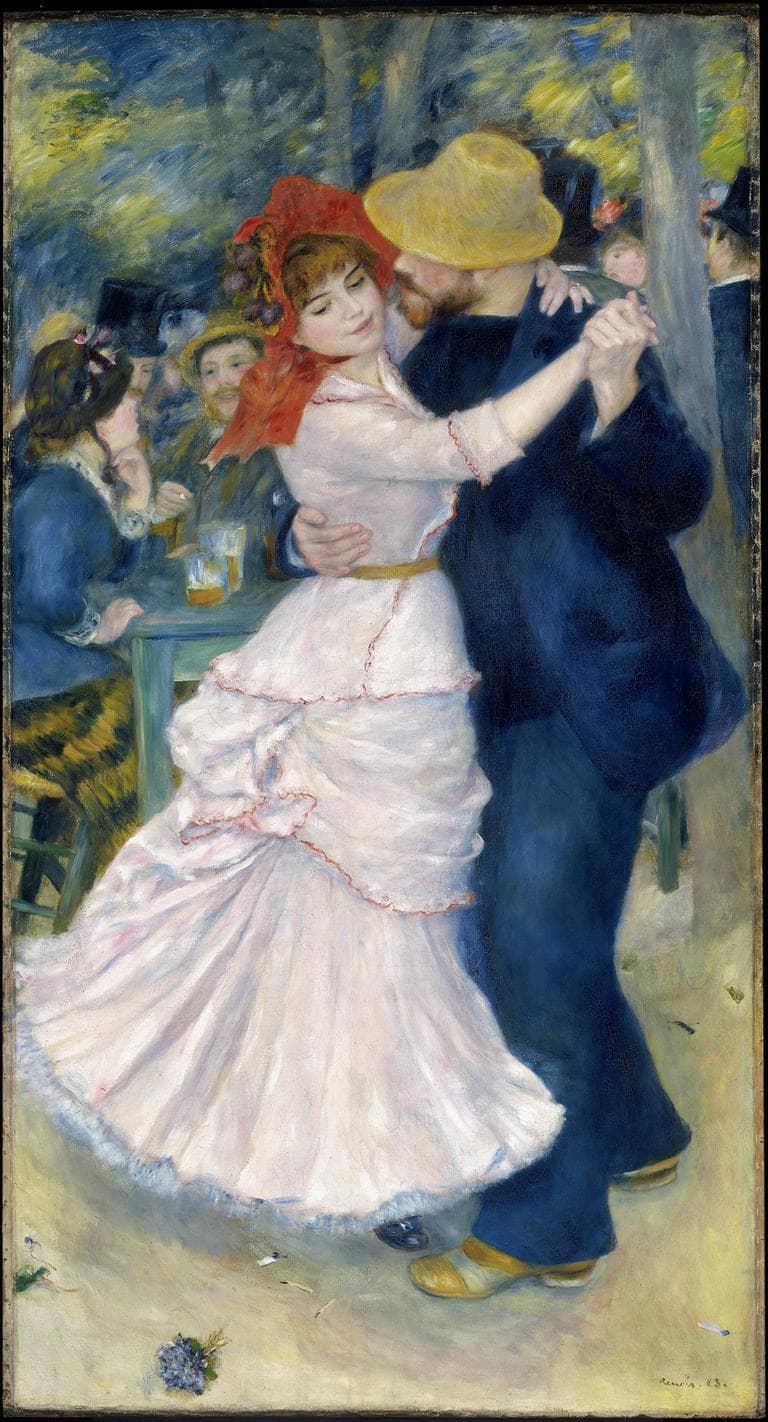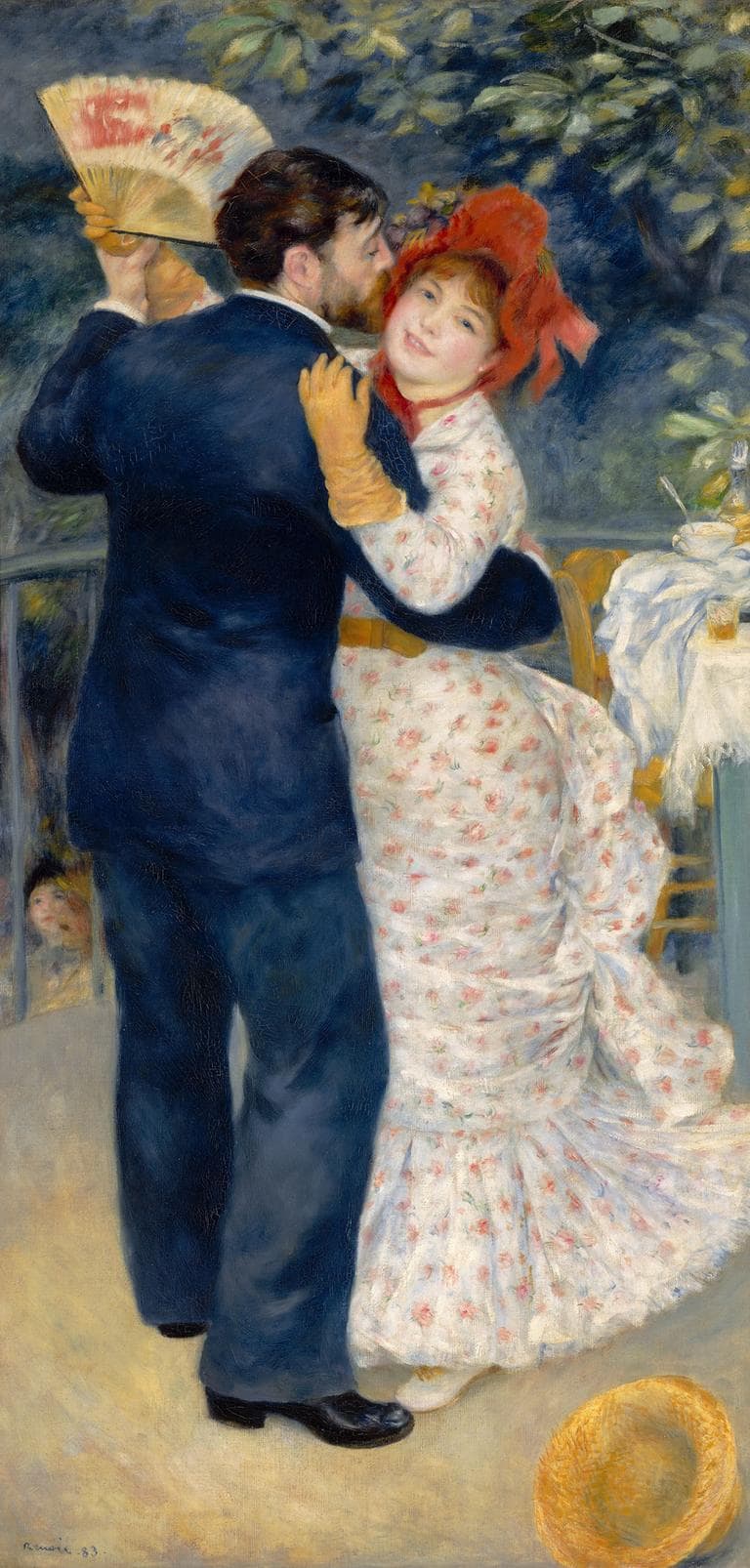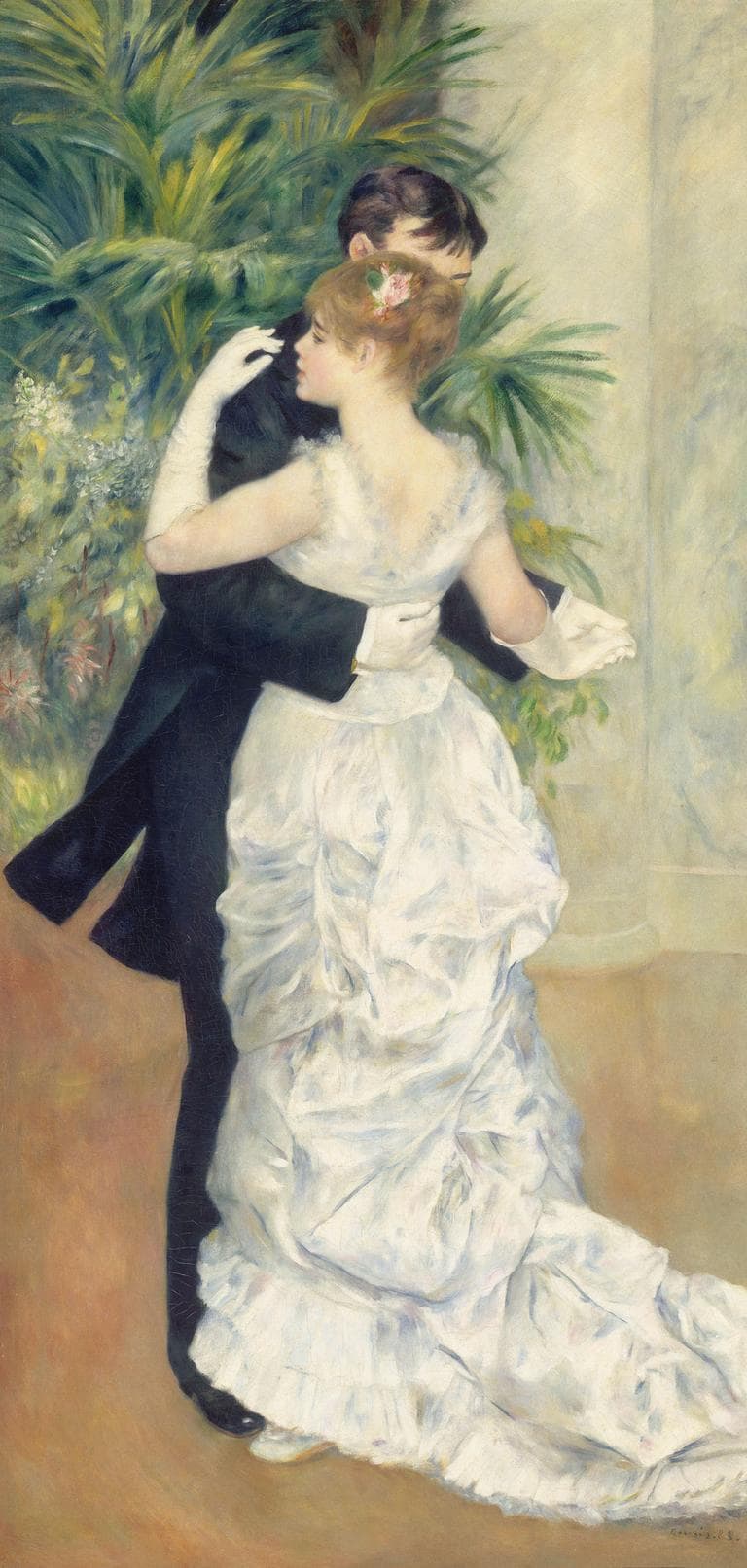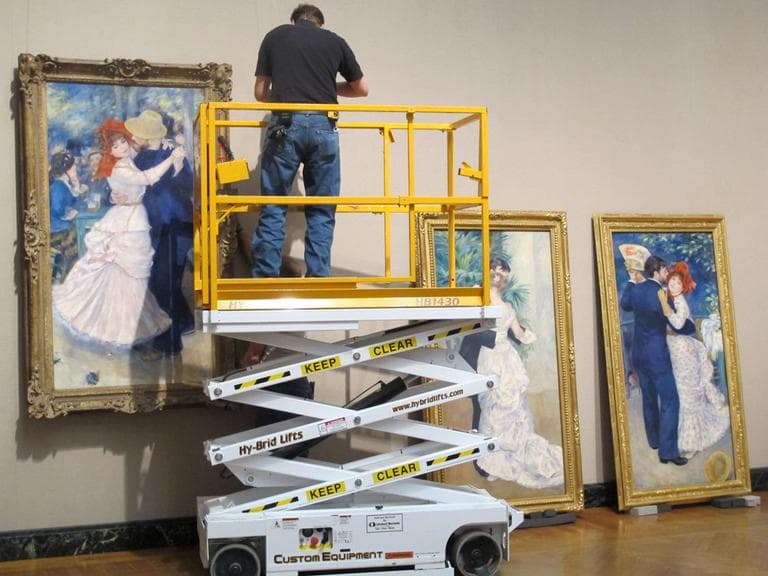Advertisement
Small Installation Of 3 Monumental Renoir Paintings Opens At The MFA



BOSTON — Fresh off the walls of New York City's Frick Collection, a small installation of three monumental works by Pierre-Auguste Renoir opens Saturday at the Museum of Fine Arts, Boston. It’s a reunion of sorts; the trio of life-sized paintings hasn’t been shown together at the MFA since 1986.
There’s a good chance you recognize these iconic impressionist works, with their twirling couples, bright red bonnets and shimmery dresses. "Dance in the Country" and "Dance in the City" are on loan from the Musee d'Orsay in Paris. "Dance at Bougival" is part of the MFA's collection.
The paintings just traveled up from Manhattan after breaking attendance records at the Frick. That larger Renoir show drew more than 120,000 visitors during its three-month run.
MFA Director Malcolm Rogers hopes they will do the same here in Boston.
"This is our equivalent of dancing with the stars — with Renoir the musician!" Rogers said. "You can't imagine three paintings that capture more of the romance and beauty of 19th century France then Renoir's three treatments of the dance."
Before we headed to the gallery for the actual installation, I asked Rogers what strikes him most about these much-loved paintings.
Advertisement
“They cover a delightful range of emotions,” he replied.

But then Rogers revealed a bit more about his sensibilities.
“This may seem a strange idea, but one of the things I think about when I look at a painting, which is essentially a silent object, I ask myself, ‘What sound does it make?’" Rogers said. "And, in a sense, when you look at these paintings you can hear that French 19th century music, you know, the accordion playing, the swish of fabrics, the slight clicking of feet on the floor."
In the gallery, an installation crew raised and lowered the large-scale paintings as Art of Europe curator Ronni Baer looked on. She explained how Renoir painted the dance series in 1883 as he was preparing his first one-man show.
“So he did all of this work in kind of a heated frenzy in a period of four months or something like that in 1883," Baer said. "So it was really something that he was noodling around with — it was a problem he set himself — and he came up with these three amazing solutions.”
I asked Baer to elaborate, and she said the three paintings together tell a fascinating story about Renoir at that stage in his career.
“He evidently started our picture ['Dance at Bougival'] first — it is a different dimension than the other two," she said. "He then seemed to have moved to the ‘Dance in the City,’ which was originally wider, and he didn't like it. He narrowed the format, finished that painting and then started the ‘Dance in the Country.’ And so those two now have the same dimensions and format. They were conceived of as pendants. And then I think he went back and finished the ‘Dance at Bougival.’And even looking at the costumes — that's a study in itself," the curator said.
While the characters in the paintings look naturalistic, they were actually staged, according to Baer. Renoir had a say in what his subjects wore, right down to their gloves.
She hopes the “Dancing with Renoir” installation will help visitors see the impressionist and his work in a different light — and she expects good-sized crowds, since the Impressionist room is already one of the most popular at the MFA.
This program aired on May 19, 2012. The audio for this program is not available.
